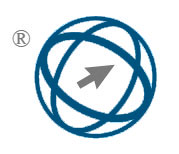LDDNet: A Custom Inception Layer-Based CNN for Enhanced Leaf Disease Detection in Precision Agriculture
Abstract
Detecting plant diseases is critical in maintaining food security worldwide and contributing to the United Nations Sustainable Development Goal (SDG) 2: Zero Hunger. In traditional agricultural settings, farmers identify diseases manually, often inaccurate and time-consuming, highlighting the need for advanced automated solutions. Current deep learning methods face challenges such as scalability limitations, imbalanced training datasets, and suboptimal feature extraction, reducing their effectiveness in real-world applications. This study introduces LDDNet, a novel deep-learning model designed to overcome these limitations by incorporating a custom Inception layer for efficient multi-scale feature extraction and Global Average Pooling (GAP) layers to improve generalization and reduce overfitting. The model was trained and evaluated using the PlantVillage dataset, with advanced preprocessing techniques, including augmentation and Region of Interest (ROI) extraction to ensure high-quality inputs. Experimental results demonstrate that LDDNet significantly outperforms state-of-the-art models, including VGG16, InceptionV3, and ResNet50, achieving an accuracy of 97.54% and an F1-score of 96.13%, with enhanced robustness under varied real-world conditions. The custom Inception layer allows LDDNet to effectively capture varying disease patterns across multiple crops, contributing to its superior performance. Furthermore, LDDNet’s architecture is inherently flexible, supporting deployment on highperformance servers and resource-constrained edge devices, making it suitable for diverse precision agriculture scenarios. This adaptable and efficient framework offers a reliable solution for early and accurate disease identification, reducing crop losses and promoting sustainable farming practices, enabling resource-optimized farming by reducing unnecessary treatments and minimizing crop losses.
Full Text:
PDFDOI: https://doi.org/10.31449/inf.v49i23.7835

This work is licensed under a Creative Commons Attribution 3.0 License.









